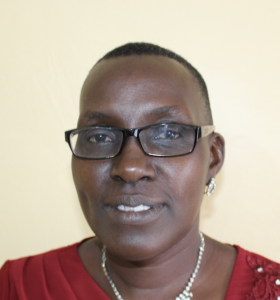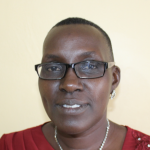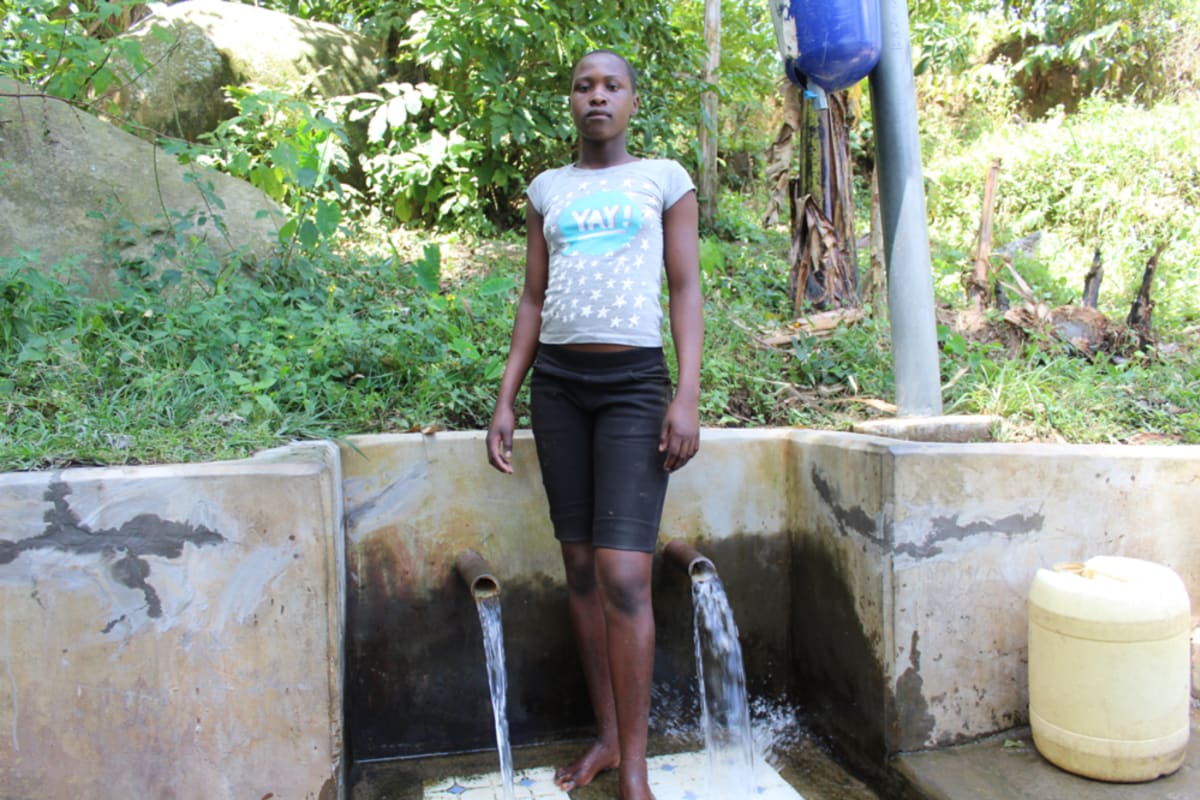It was a cold and rainy day when we visited Khayati Spring. This place became a candidate for protection when one of the community members visited a friend from Udi Spring, which we protected recently. He saw the protected spring and was very much impressed and inquired who did it. The man contacted us and we visited Khayati Spring to see for ourselves.
It is an open spring that is easily contaminated, thus making it unsafe for human consumption. Also, the community members have not cleared the area around the source and members use the bush around the spring to go to the bathroom. As a result, people contract diseases from consuming the water. Our team determined that the spring is definitely in need of protection.
"We have no other source to fetch water from that is protected," said James Lukalia, a local farmer.
The rate of poverty here is high. Protecting the spring will give community members the opportunity to spend healthy time and resources on income-generating activities that will help improve their lives.
Some 245 people from Bukhakunga Community use the spring as their primary source of water. Most households practice farming and sell their extra produce in the local market. Some raise local cattle and sell the milk that they collect. A few of the men work as boda boda riders (motorcycle taxis) for income. Often it is the women who must care for the family farm. Others work as teachers for a living.
It was the rainy season during our recent visit to Bukhakunga, so the area was green. The area is rural and peaceful. The maize was planted and about to be harvested. The roads were wet and muddy because they are not paved. Indigenous trees are around the area and we saw avocado and other local trees.
Some houses have been constructed using bricks while most households are grass-thatched muddy houses. Sanitation facilities, such as latrines and dish drying racks, are few and far between. We intend to train community members on the importance of handwashing at critical stages of their day and introduce leaky tins (improvised handwashing stations) near the latrines in their homes. We want all community members to practice good hygiene to improve their health.
The average day for community members starts around 6am when the sun rises. The women and girls fetch water, milk the cow, and prepare breakfast for the family. Children go off to school and men leave for work. Women take care of other household needs before going to work the fields. They break midday to prepare lunch for the children and tend to other needs, such as collecting firewood, getting more water, and washing clothes before it is time to make and eat dinner. The sun sets by 6pm and the family readies for bed and another day.
What we can do:
Training
Community members will attend hygiene and sanitation training for at least two days. This training will ensure participants have the knowledge they need about healthy practices and their importance. The facilitator plans to use PHAST (Participatory Hygiene and Sanitation Transformation), CLTS (Community-Led Total Sanitation), ABCD (Asset-Based Community Development), group discussions, handouts, and demonstrations at the spring. One of the most important topics we plan to cover is the handling, storage, and treatment of water. Having a clean water source will be extremely helpful, but it is useless if water gets contaminated by the time it’s consumed. Handwashing will also be a big topic.
Training will also result in the formation of a committee that will oversee operations and maintenance at the spring. They will enforce proper behavior around the spring and delegate tasks that will help preserve the site, such as building a fence and digging proper drainage. The fence will keep out destructive animals, and the drainage will keep the area’s mosquito population at a minimum.
Sanitation Platforms
On the final day of training, participants will select five families that should benefit from new latrine floors.
Training will also inform the community and selected families on what they need to contribute to make this project a success. They must mobilize locally available materials, such as bricks, clean sand, hardcore, and ballast. The five families chosen for sanitation platforms must prepare by sinking a pit for the sanitation platforms to be placed over. All community members must work together to make sure that accommodations and food are always provided for the work teams.
Spring Protection
Protecting the spring will ensure that the water is safe, adequate and secure. Construction will keep surface runoff and other contaminants out of the water. With the community’s high involvement in the process, there should be a good sense of responsibility and ownership for the new clean water source.
Fetching water is predominantly a female role, done by both women and young girls. Protecting the spring and offering training and support will, therefore, help empower the female members of the community by giving them more time and efforts to engage and invest in income-generating activities.

 Protected Spring
Protected Spring
 Rehabilitation Project
Rehabilitation Project








































